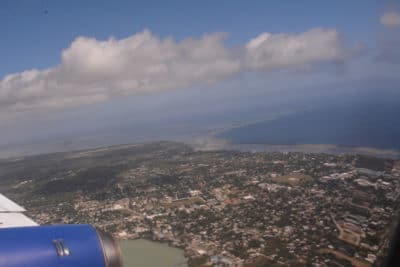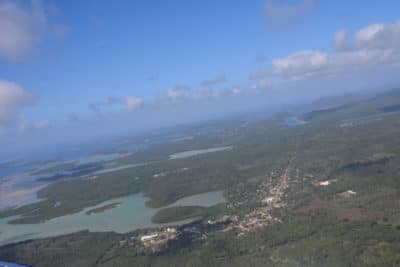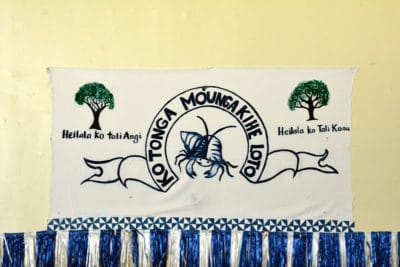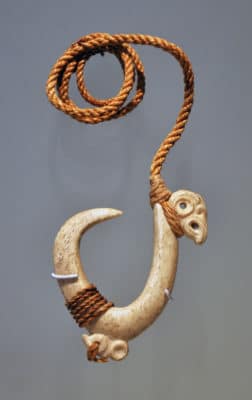Tonga Coral Education Program Blog (from October 19, 2015)
Landing in Tongatapu for our Coral Reef Education Program, my first impression was how very flat the island is. When I lived in Hawaii, I basically had a 3000 ft (900 m) extinct volcano in my backyard. The highest elevation in Tongatapu is about 200 ft (60 m) above sea level. From the plane, the island looks like a giant, green table in the sea. Vava’u, our current location, has more hills. The Tongans have a legend to explain this.


The very flat island of Tongatapu (left) and the slightly hillier Vava’u (right).
One day, Maui decided to go fishing, so he borrowed a hook from the fisherman, Tongafusifonua. Maui had many, many hooks to choose from, but he decided upon the oldest, dullest one. (Some tales tell that the fisherman’s wife, Tavatava, told Maui to pick that one.) When he went to haul in the fishing line, he found that it was stuck. He heaved with all of his might, and up came an island! He was unhappy with how hilly it was, so he kept practicing at pulling up islands until he perfected fishing up flat land. Maui was so pleased with his work that he named the largest, flattest of the islands, Tongatapu, after the fisherman who made the magic hook.
Variations of this legend are found throughout Polynesia. Some of you may be thinking of the island named Maui in Hawaii after reading this legend. The Hawaiians have a similar story of Maui fishing up their islands. Maui gave so much to the Hawaiian people that their famous singer, Israel Kamakawiwo’ole, wrote a song about Maui, calling him the Hawaiian Superman. Another version of this myth is so popular in New Zealand that the magic fishing hook is one of the most common carved necklace pendants found in the shops.
Tongans wholeheartedly embrace their flat lands and their friendly nickname, to the point that there is a saying which translates close to, “The mountain of Tonga is its heart.”

The students at MSC are proud of their “mountainous” hearts.
Photos by Melinda Campbell


One Comment on “Maui Fishing for an Island”
Lina Vaokakala
What are the living things that show in this story